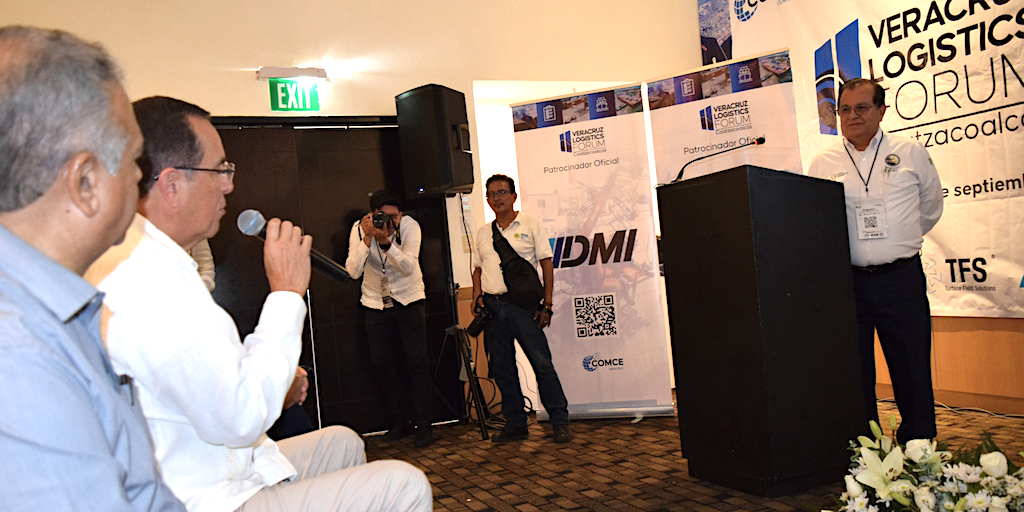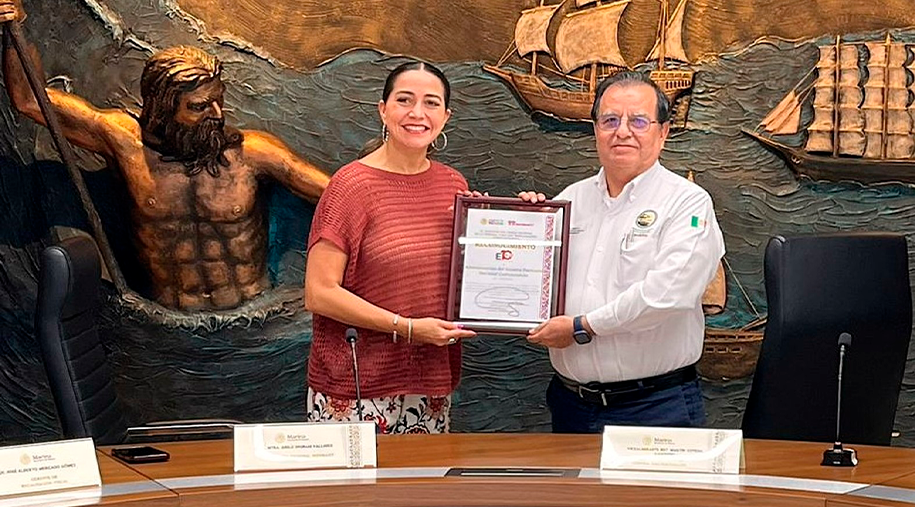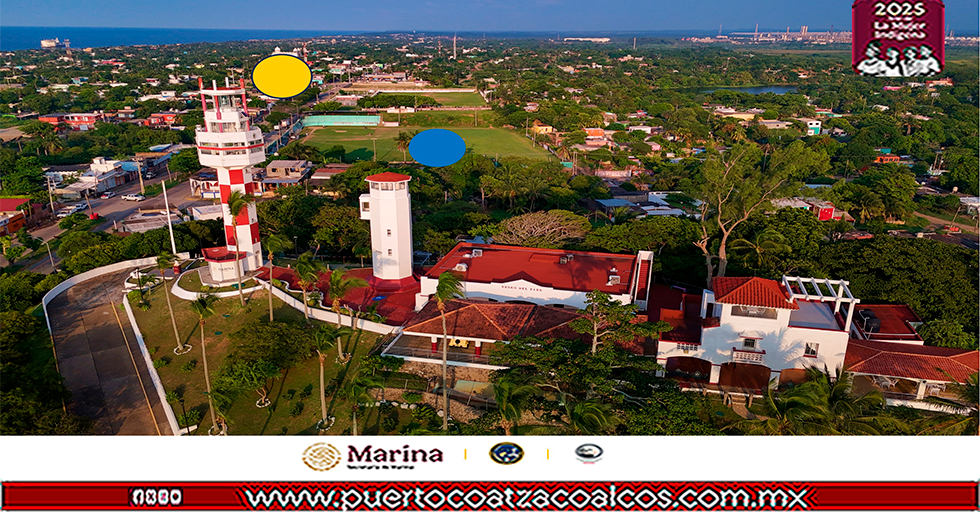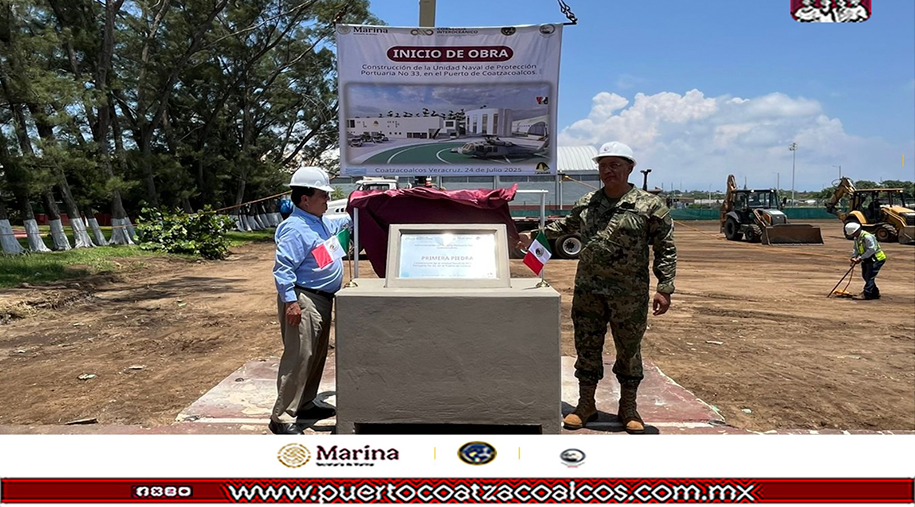 Septiembre
SeptiembreASIPONA Coatzacoalcos, empresa de diez: INFONAVIT.
En reunión privada hoy, la Lic. Anilú Ingram Vallines, Delegada Regional del Instituto Nacional del Fondo de la Vivienda para los Trabajadores
Leer MasThis influence area is dynamic, since the origins and destinations of cargos may change from one year to another, according to the fluctuations of the national and international economy, as well as the quality of the services offered by the Port.
In its influence area you can find an important group of producer and consumer centers, linked mainly to the oil industry (gas, crude oil and petrochemical products), as well as to the agro-industrial sector, which includes the states of Veracruz, Tabasco, Puebla, Estado de Mexico, Oaxaca, Campeche, Chiapas, Yucatan and Quintana Roo. It is important to mention that the influence areas, which represent 80% of the market, are the states of Veracruz, Oaxaca, Campeche, Tabasco and Chiapas, and the remaining 20% are made up by the states of Puebla, Tlaxcala, Estado de México, Mexico City, Quintana Roo and Yucatan.
The main products that make up the Port's cargo traffic are sulfur, molasses and chemical products (exports), agricultural bulk, fertilizers and chemical products (imports) and agricultural and mineral bulk (Cabotage input).
The oil and its derivatives as well as various chemicals handled at the Maritime Terminal Pajaritos should be noted as a very important component of the movements within the Port.
Although this terminal is located outside of the port premises, the port of Coatzacoalcos receives a significant income from the harbor dues of the shipments that berth at this terminal. It is worth mentioning that within the port premises, there are also installations in charge of PEMEX for the handling of the liquid sulfur.
The location of the port of Coatzacoalcos in the area of the Istmo de Tehuantepec, gives it a huge potential to establish itself not only at one end of the inter-oceanic corridor but also as a potential settlement for small and medium sized industries as well as different port businesses of international character.
The Port of Coatzacoalcos has a privileged geographic location in the region of the Istmo de Tehuantepec; it is located at the tip of the shortest land route between the Pacific Ocean and the Gulf of Mexico, at a distance of only 302 km. It is located on the left bank of the river with the same name, which flows into the Gulf of Mexico.
The municipality of Coatzacoalcos is located in the south of the state of Veracruz, at the coordinates 18° 09' north latitude and 94°26' west longitude at an altitude of 10 meters above sea level. It has an area of 471.16 km2, which represents 1% of the total state area.
It borders on the towns Pajápan, Cosoleacaque, Minatitlan, Ixhuatlán del Sureste, Moloacán and Las Choapas; in the north on the Gulf of Mexico, and in the east on the state of Tabasco. The distance by road to the state capital is about 420 km.
The Port of Coatzacoalcos is located in the Isthmus Area and at the southeastern border of the state of Veracruz. Geographically, it is a strategic point that connects the Gulf of Mexico with the Pacific Ocean by road until the cities of Tehuantepec and Salina Cruz in the state of Oaxaca.
In the north, the port premises adjoin to residential areas of the city of Coatzacoalcos, in the south to shipyards of the Mexican Navy (Secretaría de Marina), in the east to the left bank of the river, having in front of it the oil complex Pajaritos and in the west with urban districts.
The port premises cover an area of 352.0 hectares, of which 122.3 are land and 229.7 are water areas.
Regarding the highway system, the port is connected to the cities of Mexico City, Puebla, Puebla., Cordoba, and Minatitlan, Veracruz., by means of the toll highway No.95 with four traffic lanes and furthermore there is a connection to the port of Veracruz, in the village of La Tinaja, through a four lane toll highway and the federal highway Number 150. There is also is a federal two lane road in the section from Coatzacoalcos to Cardenas, Tabasco, which increases to four lanes in the section Cardenas to Villahermosa, Tabasco (No.180). Furthermore there is the federal transisthmian highway No.185, a two-lane road, which links the port with the cities Matías Romero, Tehuantepec and Salina Cruz, Oaxaca.
The port has a connection by railway to the cities of Tuxtepec/ Oaxaca, Veracruz/ Veracruz, Puebla/ Puebla and Mexico City, through the Ferrocarril del Sureste (Ferrosur) (Southeastern Railway).
The Ferrocarril del Istmo de Tehuantepec (FIT ) (Railroad of the Isthmus of Tehuantepec) is connected with the Chiapas Mayab Railway (FCM) in Coatzacoalcos/ Veracruz and Ixtepec/ Oaxaca and with Ferrosur in Medias Aguas/ Veracruz. The FIT has a total length of 303.3 km, of which 95.9 belong to Ferrosur, between Coatzacoalcos and Medias Aguas. In addition, there are short routes that connect Coatzacoalcos with Tenosique/ Tabasco and Campeche/ Campeche as well as with Merida and Progreso/Yucatán.

En reunión privada hoy, la Lic. Anilú Ingram Vallines, Delegada Regional del Instituto Nacional del Fondo de la Vivienda para los Trabajadores
Leer Mas Septiembre
Septiembre Agosto
Agosto Julio
JulioEl Puerto de Coatzacoalcos ubicado en el Istmo de Tehuantepec, se crea por decreto Federal el 8 de octubre de 1825.
La historia de su desarrollo se entrelaza con los principales acontecimientos que han influido con la configuración de la región.